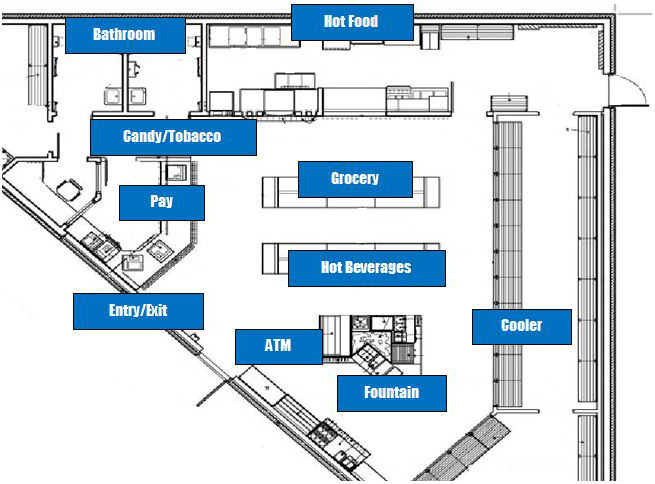Improving the C-store Customer Experience, Part 1
 Few would dispute that the typical convenience store takes a comprehensive approach to merchandising to its customers. Therein lies the problem -- quantity vs. quality.
Few would dispute that the typical convenience store takes a comprehensive approach to merchandising to its customers. Therein lies the problem -- quantity vs. quality.
To provide a convenient and superior customer experience, c-store merchandising strategies need to be developed based on understanding customers and how they operate (use and interact) within each "zone" in the store.
The most successful retail concepts have recognized that their stores are not just branded boxes. Each store is actually a collection of many individual "customer operating zones." Customers behave differently in each zone. Their needs and expectations are different. Their attitudes and mindset are different from one zone to the next. Each of these unique zones is right for one merchandising strategy and dead wrong for another.
By identifying these zones, understanding how customers behave in each zone and establishing specific business goals for each zone, c-store operators can craft zone-specific merchandising strategies that are responsive to how their customers use these zones. This makes the customer experience faster, easier and more enjoyable, while distinguishing the brand and maximizing business results.
The concept of developing merchandising and communications strategies based on "customer operating zones" was pioneered by King-Casey decades ago. This blend of science and creativity is used to help retailers, restaurants and others manage their entire customer experience -- a curb-to-curb journey. The acronym "COZI"(Customer Operating Zone Improvement) captures the methodology to achieve this. COZI involves a multi-step process, as follows:
Step 1. Conduct Zone Assessment
The first step is to understand your convenience store environment and your customers. Begin by identifying all of the COZI zones within your store. What are your "zones of opportunity?"
 |
| Any retail store is actually a series of many different zones. By identifying these and understanding how customers interact in these zones, you can develop communication strategies that optimize business results while improving the customer experience. This floor plan identifies a few typical customer operating zones. |
Your c-store chain is likely to have the following zones:
- Street zone
- Entry zone
- Grocery zone
- Cooler zone
- Candy/tobacco zone
- ATM zone
- Magazine zone
- Hot beverage zone
- Pay zone
- Health and beauty care zone
- Fountain zone
- Exit zone
Each product category can result in its own zone and there are certainly many other potential zones, such as restrooms, parking, gas pumps, etc.
Once all of your zones are identified, determine how customers use and interact with these zones. Measure the time they spend in each zone. For each zone, probe to discover customer needs, expectations, attitudes and behavior. What problems do they encounter in these zones? Do they understand what's being communicated to them? Here's where focus groups, customer interviews and video tracking studies can be particularly insightful and helpful.
Now, walk around the store and do your own assessment of your current merchandising and communications. Are your merchandising strategies appropriate for the zones? Do you have the right message for the right zone? How can messages in this zone be optimized to drive sales?
Step 2. Develop Zone Strategies
This step consists of three elements: What is it that you want to achieve; what is it that you want to say; and how you are going to say it?
Business objective. Begin by identifying the business strategy for each of the zones. What is it that you hope to achieve in this zone? How will you measure improvement? Note that your business objectives may vary from zone to zone.
Message content. What is it that you must communicate to achieve your business objectives for this zone? The message should be responsive to how customers use this zone (e.g., you don’t want a long and detailed message in the entry zone, as research tells us that customers only take two to three seconds to view this message).
Physical element. What is the physical nature of communications in this zone that will best communicate your message? What would work best in this zone -- a poster? A window decal? Digital signage? Aisle toppers? Part 2 of this column will concentrate on convenience store zone merchandising solution development, refinement and implementation.
Tom Cook is a principal of King-Casey. Established in 1953, King-Casey is a leading retail branding and design firm with a particular specialty in restaurants and foodservice. King-Casey’s focus is on building its clients' businesses by strengthening their brands and improving their customer experience. For information, visit www.king-casey.com. Cook can be reached at (203) 571-1776 or tcook@king-casey.com.
Editor's note: The opinions expressed in this column are the author's and do not necessarily reflect the views of Convenience Store News.
